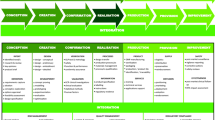Abstract
If we could determine the future, life would be easy. We could not only look forward to great new tools and treatments, but with a common goodwill we could fix coming problems. But even if we had such insight, through our actions the future would be altered from what was predicted and, paradoxically, we would fail to predict it! All we can do is speculate based on where we are now, both good and bad, and how we expect things to evolve. In this final chapter, we deal with some potential examples of coming changes in technologies and delivery of care. We recommend caution when dealing with new technologies. As we have experienced repeatedly in the past, innovations that at first seem essential for modern management often turn out to create new problems We finish with what should only be considered as a speculative playful list of our predictions for the future.
Access this chapter
Tax calculation will be finalised at checkout
Purchases are for personal use only
Similar content being viewed by others
References
Abraham E, Wunderink R, Silverman H, Perl TM, Nasraway S, Levy H, et al. Efficacy and safety of monoclonal antibody to human tumor necrosis factor alpha in patients with sepsis syndrome. A randomized, controlled, double-blind, multicenter clinical trial. TNF-alpha MAb Sepsis study group. J Am Med Assoc. 1995;273(12):934–41.
Abraham E, Glauser MP, Butler T, Garbino J, Gelmont D, Laterre PF, et al. p55 tumor necrosis factor receptor fusion protein in the treatment of patients with severe sepsis and septic shock. A randomized controlled multicenter trial. Ro 45-2081 study group. JAMA. 1997;277(19):1531–8.
Boyd O, Grounds RM, Bennett ED. A randomized clinical trial of the effect of deliberate perioperative increase of oxygen delivery on mortality in high-risk surgical patients. J Am Med Assoc. 1993;270(22):2699–707.
Browner WS, Newman TB. Are all significant P values created equal? The analogy between diagnostic tests and clinical research. JAMA. 1987;257(18):2459–63.
Burke E. Edmun Burke quotes quote-coyote.com. (Available from: https://www.quote-coyote.com/quotes/authors/b/edmund-burke/).
Cameron JI, Chu LM, Matte A, Tomlinson G, Chan L, Thomas C, et al. One-year outcomes in caregivers of critically ill patients. N Engl J Med. 2016;374(19):1831–41.
Cross AS. Antiendotoxin antibodies: a dead end? Ann Intern Med. 1994;121(1):58–60.
Danziger J. Ángel Armengol de la Hoz M, li W, Komorowski M, Deliberato RO, rush BNM, et al. temporal trends in critical care outcomes in U.S. minority-serving hospitals. Am J Respir Crit Care Med. 2020;201(6):681–7.
Gavard J. Endothelial permeability and VE-cadherin. Cell Adhes Migr. 2014;8(2):158–64.
Goronzy JJ, Weyand CM. Understanding immunosenescence to improve responses to vaccines. Nat Immunol. 2013;14(5):428–36.
Gustafsson UO, Scott MJ, Hubner M, Nygren J, Demartines N, Francis N, et al. Guidelines for perioperative Care in Elective Colorectal Surgery: enhanced recovery after surgery (ERAS(®)) society recommendations: 2018. World J Surg. 2019;43(3):659–95.
Herridge MS, Cheung AM, Tansey CM, Matte-Martyn A, Diaz-Granados N, Al-Saidi F, et al. One-year outcomes in survivors of the acute respiratory distress syndrome. N Engl J Med. 2003;348(8):683–93.
Herridge MS, Tansey CM, Matté A, Tomlinson G, Diaz-Granados N, Cooper A, et al. Functional disability 5 years after acute respiratory distress syndrome. N Engl J Med. 2011;364(14):1293–304.
Knaus WA, Marks RD. New phenotypes for Sepsis: the promise and problem of applying machine learning and artificial intelligence in clinical research. JAMA. 2019;321(20):1981–2.
Ljungqvist O, Scott M, Fearon KC. Enhanced recovery after surgery: a review. JAMA Surg. 2017;152(3):292–8.
Lopez A, Lorente JA, Steingrub J, Bakker J, McLuckie A, Willatts S, et al. Multiple-center, randomized, placebo-controlled, double-blind study of the nitric oxide synthase inhibitor 546C88: effect on survival in patients with septic shock. Crit Care Med. 2004;32(1):21–30.
McCloskey RV, Straube RC, Sanders C, Smith SM, Smith CR. Treatment of septic shock with human monoclonal antibody HA-1A. A randomized, double-blind, placebo-controlled trial. CHESS trial study group. Ann Intern Med. 1994;121(1):1–5.
Pearse RM, Harrison DA, MacDonald N, Gillies MA, Blunt M, Ackland G, et al. Effect of a perioperative, cardiac output-guided hemodynamic therapy algorithm on outcomes following major gastrointestinal surgery: a randomized clinical trial and systematic review. JAMA. 2014;311(21):2181–90.
Postman N. Technopoloy: the surrender of culture to technology. New York: Vintage books; 1992.
Rautanen A, Mills TC, Gordon AC, Hutton P, Steffens M, Nuamah R, et al. Genome-wide association study of survival from sepsis due to pneumonia: an observational cohort study. Lancet Respir Med. 2015;3(1):53–60.
Seymour CW, Kennedy JN, Wang S, Chang C-CH, Elliott CF, Xu Z, et al. Derivation, validation, and potential treatment implications of novel clinical phenotypes for Sepsis. JAMA. 2019a;321(20):2003–17.
Seymour CW, Kennedy JN, Wang S, Chang CH, Elliott CF, Xu Z, et al. Derivation, validation, and potential treatment implications of novel clinical phenotypes for Sepsis. JAMA. 2019b;321(20):2003–17.
Weyand CM, Goronzy JJ. Aging of the immune system. mechanisms and therapeutic targets. Ann Am Thorac Soc. 2016;13(Suppl 5):S422–s8.
Author information
Authors and Affiliations
Corresponding author
Editor information
Editors and Affiliations
Rights and permissions
Copyright information
© 2021 Springer Nature Switzerland AG
About this chapter
Cite this chapter
Magder, S., Hardin, C.C., Hibbert, K.A., Malhotra, A. (2021). The Future. In: Magder, S., Malhotra, A., Hibbert, K.A., Hardin, C.C. (eds) Cardiopulmonary Monitoring. Springer, Cham. https://doi.org/10.1007/978-3-030-73387-2_59
Download citation
DOI: https://doi.org/10.1007/978-3-030-73387-2_59
Published:
Publisher Name: Springer, Cham
Print ISBN: 978-3-030-73386-5
Online ISBN: 978-3-030-73387-2
eBook Packages: MedicineMedicine (R0)




